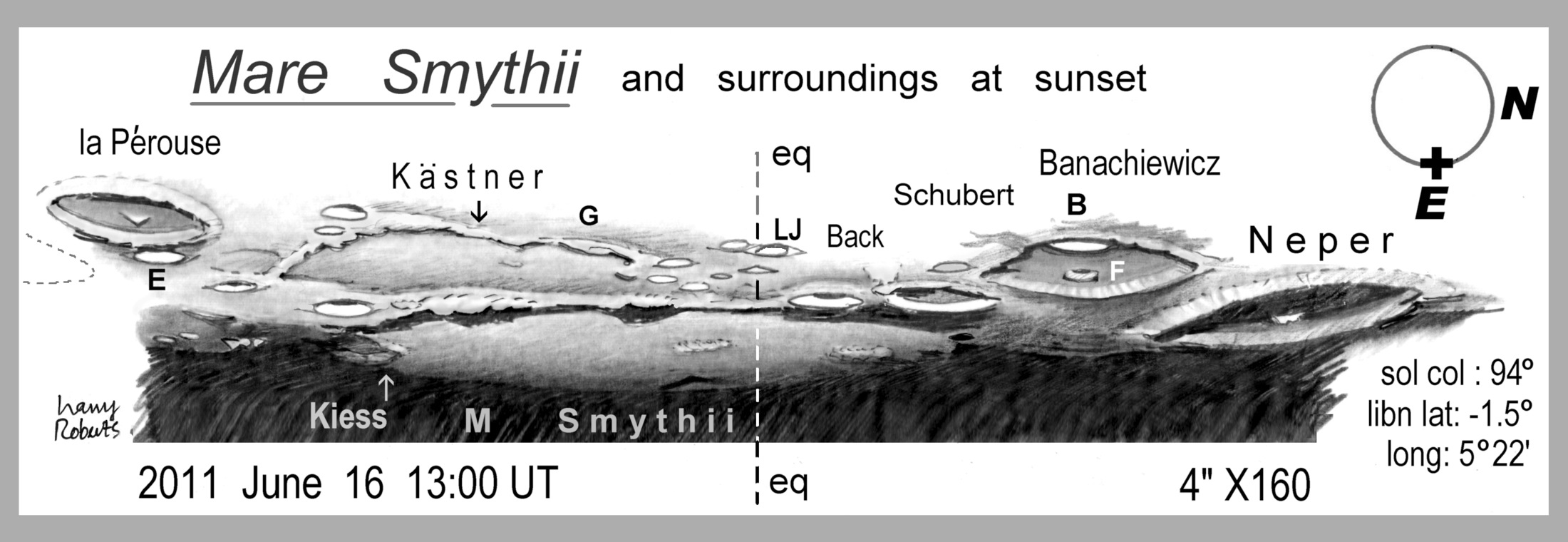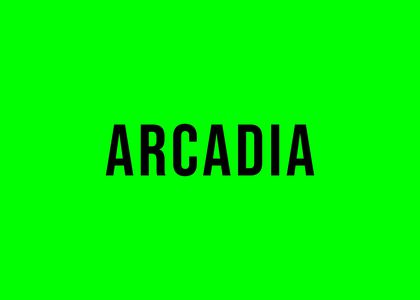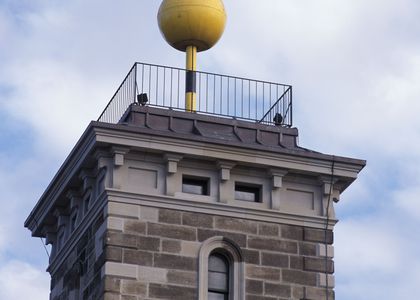Solar & lunar observer & correspondent Harry Roberts reports on the rarely seen lunar mare Smythii and crater Jenkins. It’s been a while since we last posted a report from Harry – hope you enjoy this one.

The Moon offers many amazing vistas – some may be once in a lifetime views! Riccioli named the lunar “seas” after mood states, weather or geographic terms – but there are two exceptions: Humboldt’s Sea and Smyth’s Sea (the latter a British astronomical Admiral, the former the German explorer). Both are 19th C additions to the original list of “seas”. Mare Smythii is an old basin formation on the Moon’s extreme eastern limb – and, due to libration, is not often seen.
The writer’s four-inch Maksutov, kept handy, often ‘gets’ rare views – as on June 16, 2011. The Moon was just past full and low magnification showed unfamiliar detail all along the east limb – amid which, a round basin stood out strikingly. What was that?
It was large, about ⅔ the size of nearby Mare Crisium. Sketching the basin and its neighbours at 167 ‘times’ took thirty minutes (See Figure above) and at cloudy moments I searched Rűkl for the answer: it was Mare Smythii, under good lighting and libration – an uncommon sight!
The ‘scope showed a round basin, almost side-on, ringed by a low unbroken rim, higher in places, with a smooth floor and hints of low “hills” on the sunset horizon. The view, much like those from Apollo era capsules, was a spectacular oblique vista!
An astronaut standing in Smythii would see the sun setting in the west at altitude 6º, casting shadows ten times longer than the height of any feature. The shadows of Smythii’s encircling scarp are about 15-30km wide and the 10:1 ratio suggest the rim is mostly 1.5-km high, rising to 3-km. “Virtual Moon” put the sunset shadow at longitude 86º, so we see only half of Smyth’s Sea. Some of the “hills” in the basin are floor-fracture craters (FFC, there are many), but better seeing was needed for details.
Neighbours: some unusual landforms lay nearby. Most striking was Neper, a huge crater 137-km wide, almost half of Smythii (at 300-km). Deep, with terraced walls and a peak piercing the shadows, it was a striking crater. North of it was shallower Banachiewicz, ‘eye-catching’ with a brilliant white crescent: crater Banachiewicz B, the brightest thing in the field. SE of Banachiewicz were Schubert and Back, two fresh craters on Smythii’s rim.
South of Smythii we find ‘fresh’ la Pérouse – with its historic Sydney link and bright central peak. Between la Pérouse and Back a long thin “walled plain” wavered across almost 200-km: Kästner and Kästner G, two ancient overlaps – much like Struve in the lunar NW.
Louise Jenkins. There is much to see in this unfamiliar region – including crater ‘LJ’ (see Figure). This is US astronomer Louise Jenkins (1888-1970).
While she is memorialised with a crater name, she is not as well-known as others thus rewarded. She was a Yale astronomer, a catalogue(r) of stars, including variables. As well she used parallax for stellar distances and later edited the “Astronomical Journal” for 16 years. An impressive career.
Maybe historians have given the Harvard ‘female computers’ closer attention; “The Glass Universe” (2016), a very fine account of the Harvard Women – makes no mention of Yale or Jenkins.
Crater Jenkins. ‘Her’ crater is 38 km diameter, an impressive size, but in ‘scopes will always be squashed into a thin ellipse, if it can be seen at all!
A superb view of Smythii from the north (Kiess top centre) is in the “Kaguya Lunar Atlas”– a “must-have” for moon-watchers; though Jenkins is not shown.
All told – it was a good return for a short session, on a cold and moonlit night. Clear skies!
Harry Roberts is a Sun and Moon observer, a regular contributor to the Sydney Observatory blog and a member of the Sydney City Skywatchers.


